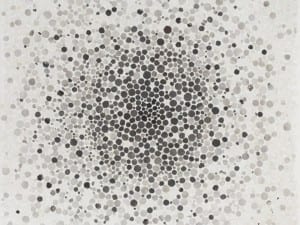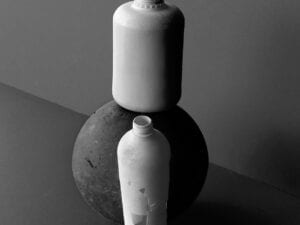Representing Austria in their national pavilion at this year’s Venice Biennale are two innovators in the field of sculpture, whose radically different approaches are brought in to dialogue by curator Christa Steinle. Both Brigitte Kowanz (b. 1957) and Erwin Wurm (b.1954) react in their own extraordinary ways to the changes in our perception and understanding of space that have been brought about over the last two centuries by the rise of technology, new forms of media and materials. A consequence of this shift has been an explosion in the imaginative possibilities available to art as it is liberated from the idea of the static image.
Kowanz and Wurm are both past recipients of the Grand Austrian State Prize for their work, and both operate at the intersection of sculpture and architecture. However their practices are widely divergent. Brigitte Kowanz works with light, creating sculptural works from something that embodies the ephemeral and defies capture. In her light objects, complex structures of images and projections emerge from simple processes. She concentrates on the fundamental parameters of art: visibility, perception and the production of meaning. She investigates questions around measuring the speed of light, and its potential for carrying information, such as the transmission of binary code. This ties it in with her prevailing interest in language which, like light, is one of the parameters that shapes our experience. Her abiding fascination is with the way light makes everything visible, yet remains invisible.
Wurm is known for a performative approach to sculpture – he considers it as a form of action. In many works, his subject is the interaction of human beings with objects rather than the objects themselves – he photographs and videos people interacting with items or leaves instructions for individuals in the gallery space directing them to assemble a sculpture. This is most clearly seen in his One Minute Sculpture series, featuring participants being directed to strike and hold absurd poses with everyday objects which are then photographed. In other distinct bodies of work, we see the insights gained from the action sculptures transferred back to static objects. One example is Narrow House (2010), an intervention in public space that was on show at the Biennale in 2011, based on his own childhood home, but compressed and distorted to create an effect both humorous and disturbing.
Brigitte Kowanz / Erwin Wurm; Austrian Pavilion, Giardini della Biennale, Venice; 13 May – 26 November. For more information: www.labiennale.org
For the latest in contemporary arts and culture, follow us on Instagram, Twitter and Facebook.
Credits:
1. Brigitte Kowanz, Coincidence (2006). Photo: Guido Cecere | Copyright: Bildrecht, Vienna 2017





